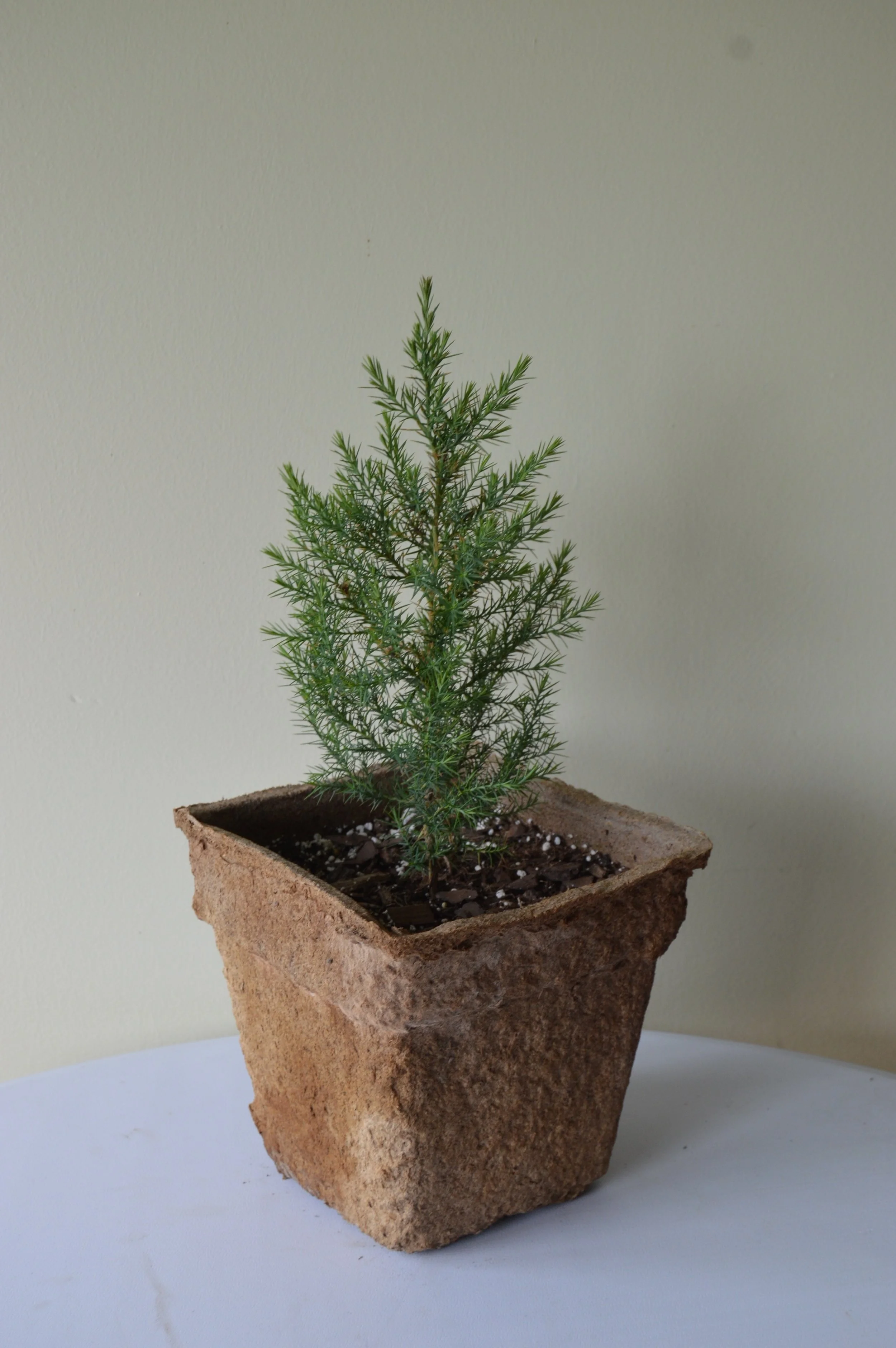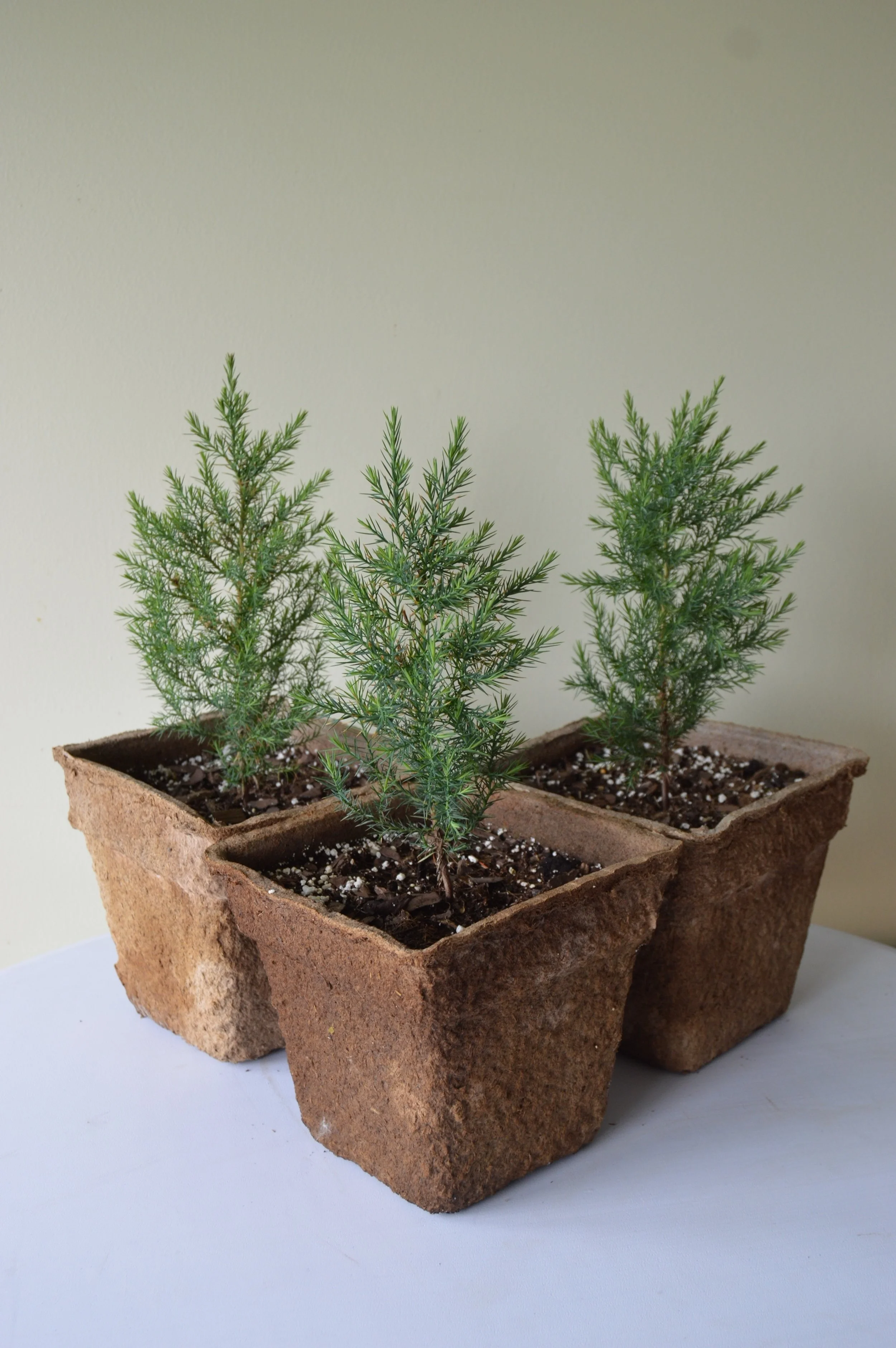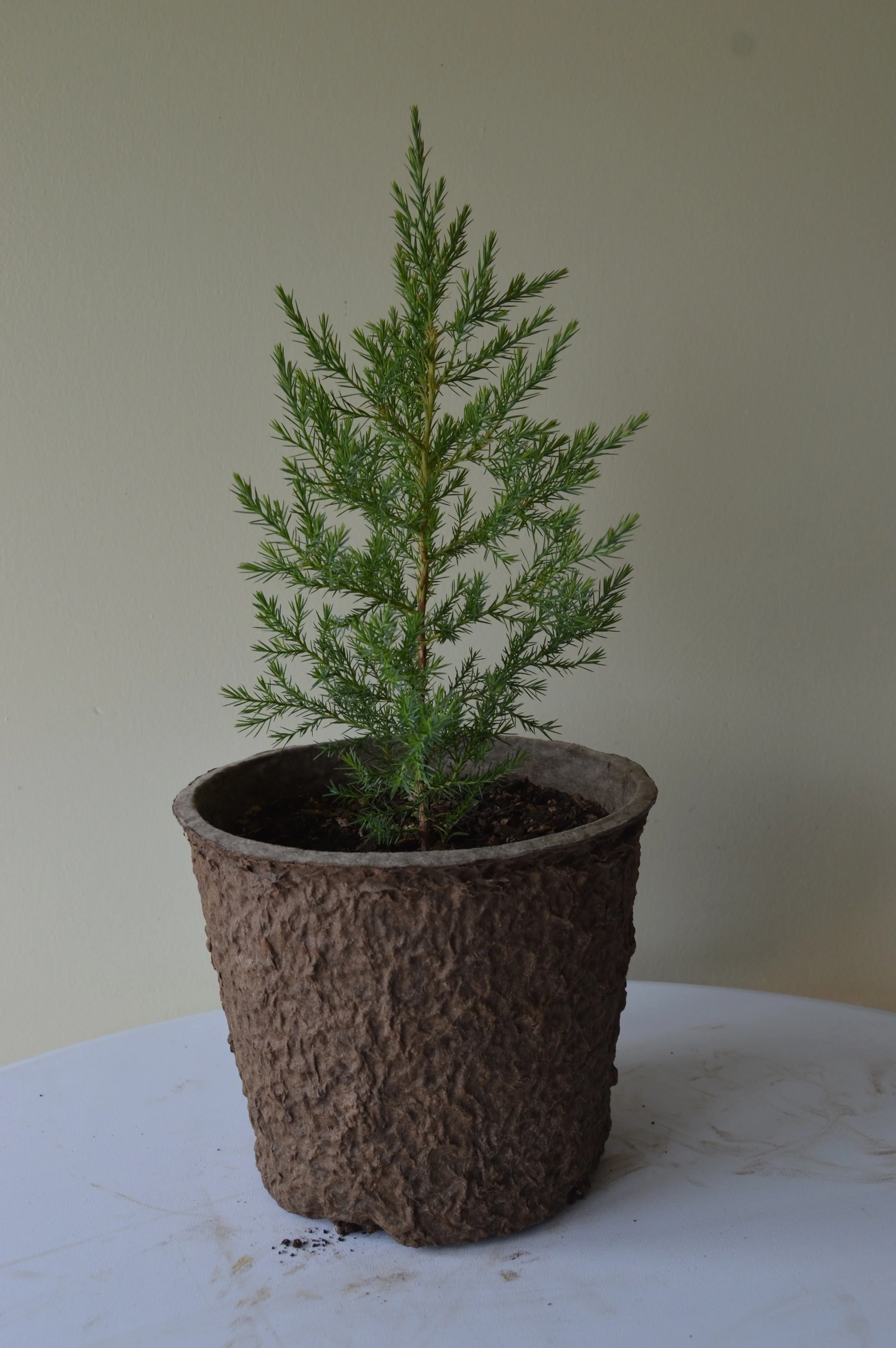This species is a very common evergreen in the southern half of Michigan’s Lower Peninsula. This is a small to medium sized tree that has a very tough constitution. It’s often the first tree species to establish itself in abandoned fields, and is often seen growing alongside highways in the southern half of our state.
The city of Baton Rouge (French for “red stick”) was named after the reddish wood of this aromatic species. The wood of this tree was historically used to make pencils, although other species of cedar are used today. This is still the fragrant wood used in cedar closets and to make cedar chests. Red Cedar cones are also used to flavor gin.
If you want a hard to kill evergreen tree, there is none better. They are more salt tolerant than other evergreens. They can grow in any soil except chronically wet soils. They are drought tolerant, wind tolerant and heat tolerant. They are also a moderately long lived species at two or three hundred years. So why aren’t they common in the nursery trade? Probably because they’re fairly prickly to the touch, and their summer green color turns a rather dingy purplish brown in the winter.
A dense planting of these is a great windbreak and provides good winter habitat for many animals.
Eastern Red Cedar/Upright Juniper
Junuperus virginianus
Small Red Cedars:
10 for $100
1 for $15
Large Red Cedars:
1 for $19
Hardiness Zones: 2-9
Light Requirement: Full sun is a must, they are intolerant of shade.
Soil Preferences: This tree grows in any type of soil.
Moisture Requirements: Average to dry soils, intolerant of chronically wet areas.
Size: 30-60 feet
Growth Rate: Moderate growth rate in youth, slower as it matures.
Potential Problems: Few pests, but this species is susceptible to Cedar Apple Rust when planted in proximity to apple trees.



